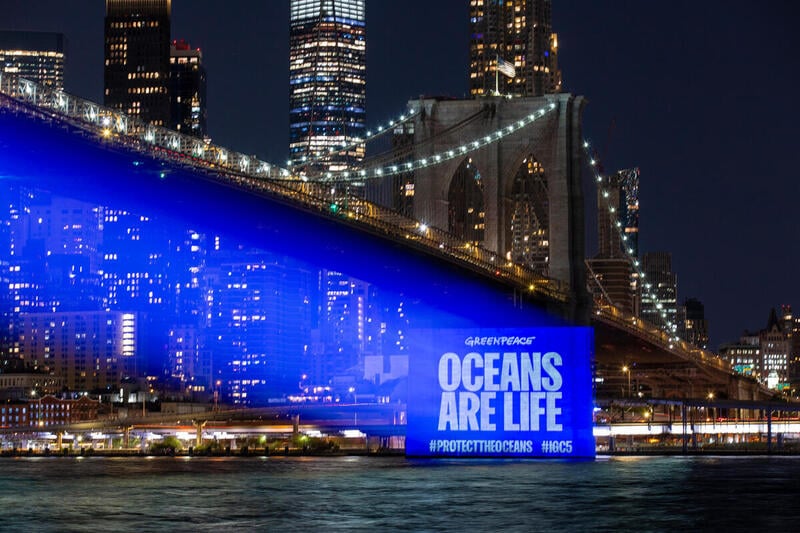For over two years, Greenpeace has been campaigning for leaders to support the creation of an ambitious Global Oceans Treaty at the UN – one that would facilitate the protection of at least 30% of the world’s oceans by 2030.
Last year, we travelled the world’s oceans from pole to pole to document the threats to marine life and to highlight the beauty and biodiversity that’s in need of protection, to get the most complete picture possible. Plastic pollution, industrial fishing, oil and gas exploitation, global warming: human activity is pushing marine biodiversity to its limits.
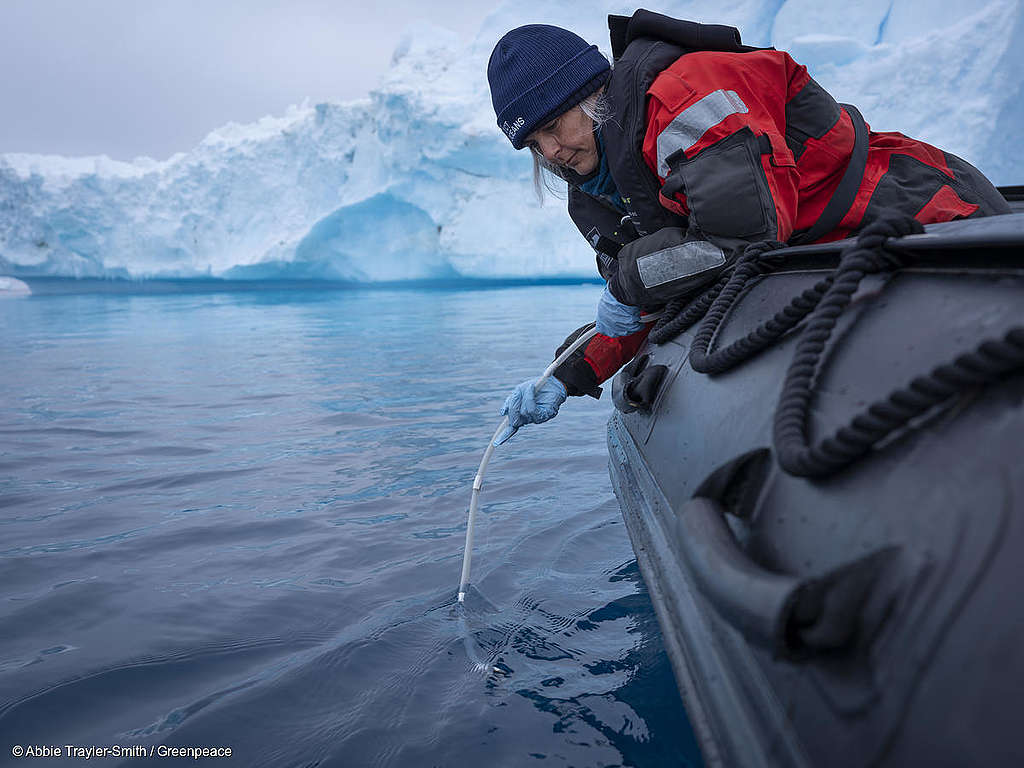
So, with the help of the scientific community, we produced a roadmap to achieve a network covering 30% to 50% of the oceans in marine reserves. Areas free from industrial activity to allow marine biodiversity to recover and ensure greater resilience for marine ecosystems as oceans change due to the climate crisis. We have mapped areas of strategic importance and are urging governments to support this minimum threshold of protection in international waters.
Last Thursday, after months of silence and inaction to show leadership on this protection goal through a strong Treaty, Canada finally joined the Global Oceans Alliance, an initiative of the United Kingdom that now includes 22 states committed to the UN target of 30% marine protected areas globally by 2030.
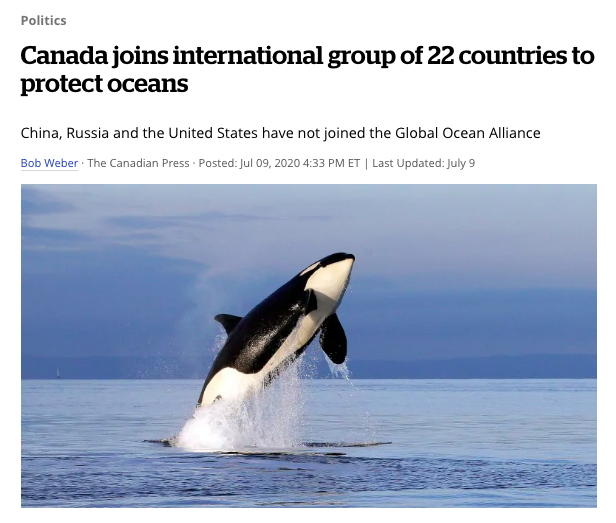
Canada’s commitment to supporting the 30×30 target in the next round of UN negotiations is certainly an important first step. But we will have to be vigilant to ensure these words result in action.
The other side of the coin
Although Canada already protects 14% of its national marine environment, the Trudeau government has not abandoned the idea of oil exploration in its waters. This is particularly the case off the coast of Newfoundland, where a Canadian mining and oil company obtained an exploratory licence in 2019 in an area straddling a marine refuge. The company plans to drill 20 oil wells in the area by the end of the decade.
It should be noted that last year the federal government said that offshore oil and gas drilling would no longer be allowed in marine protected areas. A welcomed step to create protected areas that protect in practice, not just on paper.
But this year the pendulum shifted dramatically in the opposite direction. The government stated that it no longer requires oil companies to conduct an impact study and obtain approval from the Canadian Environmental Assessment Agency (CEAA) before drilling in the marine environment.
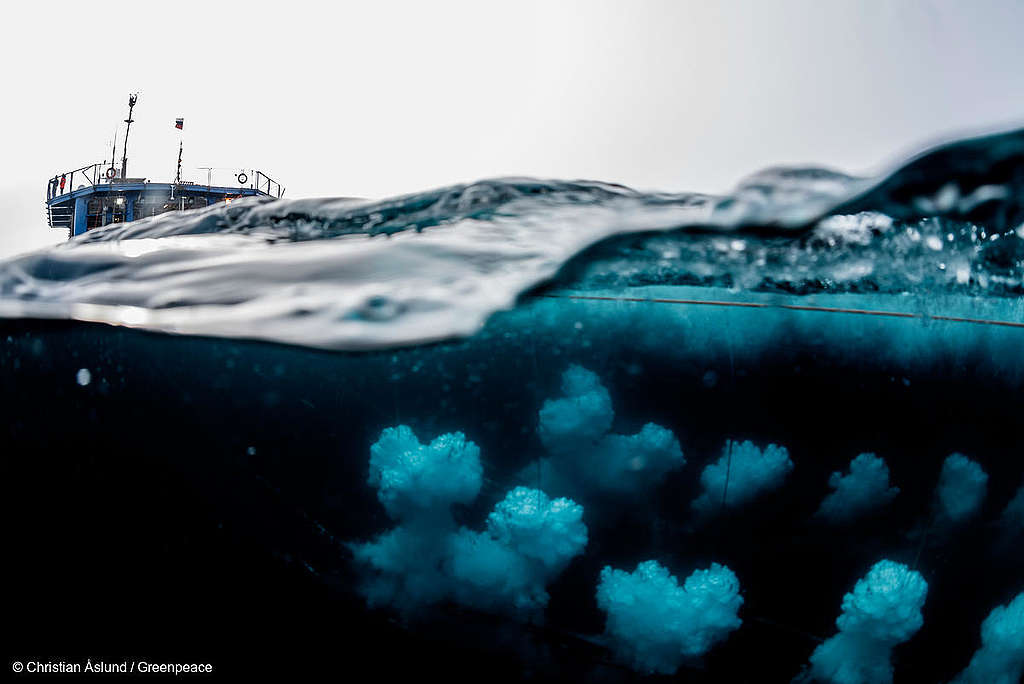
This has been announced in the name of economic recovery, but we know any green and just recovery from the COVID-19 pandemic doesn’t allow fossil fuel development to continue to threaten the environment, communities or planetary health. The government justifies itself so far by stating that exploration activities are subject to impact restrictions “if it is determined that risks to the area are effectively avoided or mitigated”, stating that fishing gear scraping the seabed remains prohibited in marine refuges. But the scientific community is clear on the subject: a protected area or marine reserve can be considered as such if it is free of all human exploitation and industrial activity.
Calling out inconsistency
As in many other cases related to environmental protection, here again, the government is being inconsistent. And we need to challenge it for the sake of our oceans and for a recovery that allows us to build back better towards a low-carbon economy that doesn’t push nature’s limits to the brink. Here’s what you can do today:
Send a tweet to Bernadette Jordan, Minister of Fisheries, Oceans and the Canadian Coast Guard and Jonathan Wilkinson, Minister of Environment and Climate Change:
Ocean ecosystems are struggling, and yet the role of healthy oceans in fighting the climate crisis is of paramount importance. We now know that nature-based solutions are strategic and beneficial for both the environment and the economy.
More than 3 million people around the world have made their voices heard in calling on governments to take action. Together, we have succeeded in getting Canada to finally commit to the 30X30 goal. We can go even further. Tell the Trudeau government to be consistent when it comes to ocean protection.
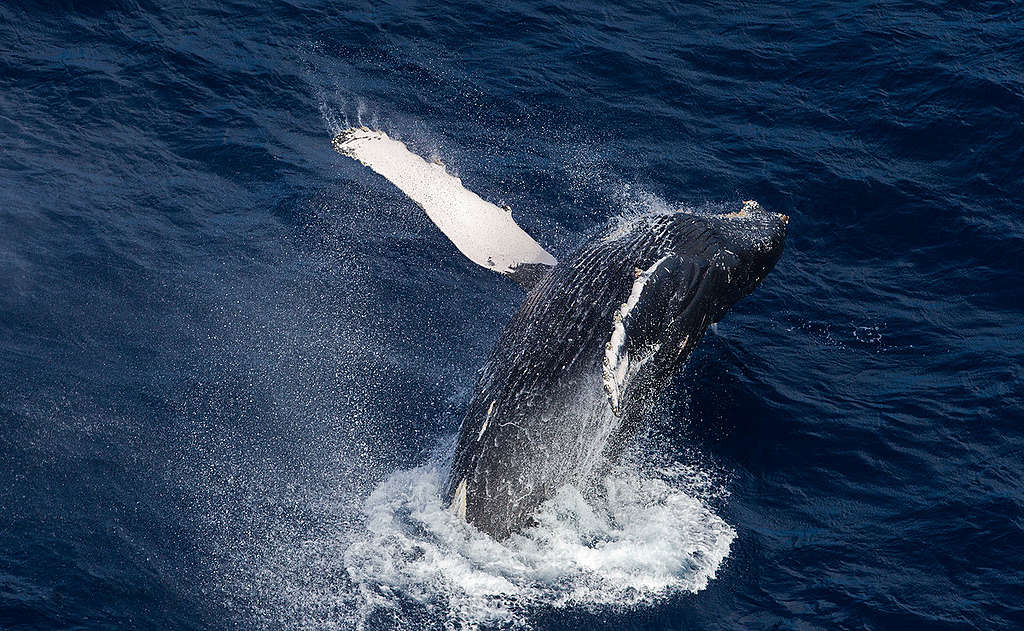
The seas provide half of our oxygen, food for a billion people, and a home for some of the most spectacular wildlife on Earth. But the impacts of climate change, pollution and destructive industries mean they’re in more danger than ever.
Take action


